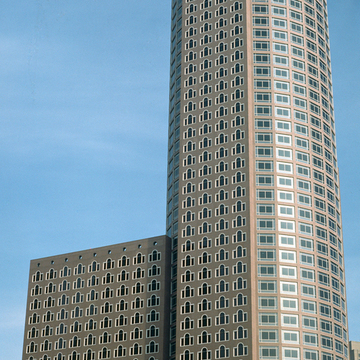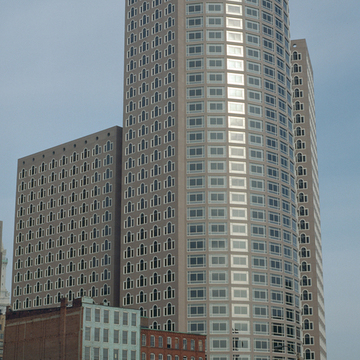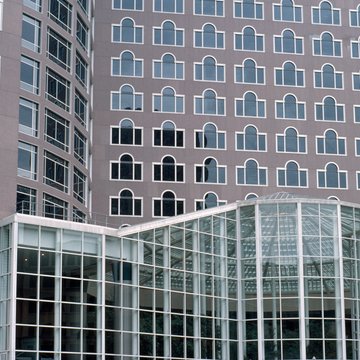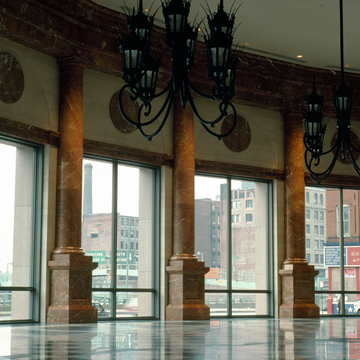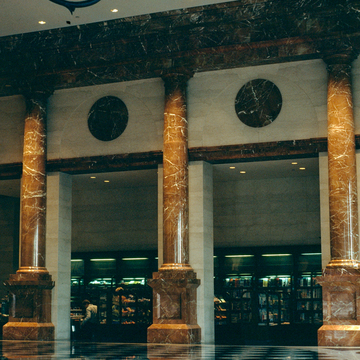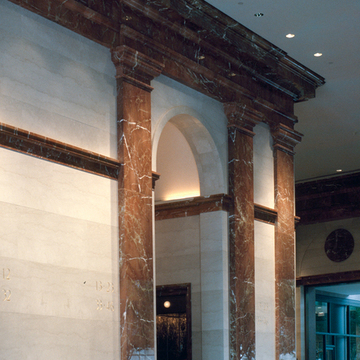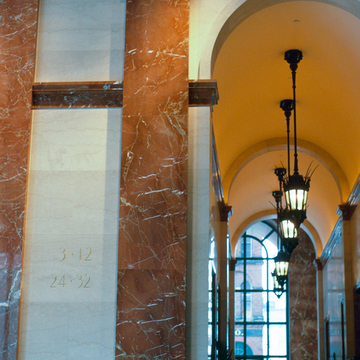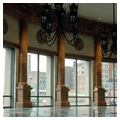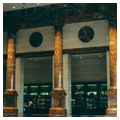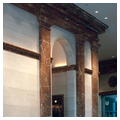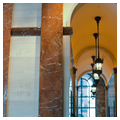Fort Hill, originally a rocky promontory, was the site of cannon that defended the harbor during the city's earliest times in the 1630s. Later, in the beginning of the nineteenth century, Boston merchants who lived here could appreciate the fine views and even monitor ships from their brick dwellings. By midcentury, however, the area was jammed with immigrants, leading to its leveling from 1866 to 1877 and subsequent conversion to commercial use.
Hardly a hint of the area's history or the irregular pentagonal plot survives in International Place, a grandiose project conceived by Philip Johnson as an “urban village.” Two cylindrical towers—forty-six and thirty-five stories tall—dominate three rectilinear office buildings, the whole grouped around the central fifty-five-foot rain fountain court. Sound competes with sight in this skylit atrium ringed by trees and such public amenities as cafés and shops.
Dominant landmarks on the downtown skyline, the multifaceted towers offend through the dullness of their exterior articulation—particularly the density of Palladian windows, crowned with false arches. Allusions to Boston abound, such as the massive iron lanterns at the Olive Street entrances derived from the Boston Public Library (BB42) and the imitation of the conical roof from the nearby Chamber of Commerce Building (WF22). Intricately grained polychrome marbles make each elevator ride an aesthetic experience. In a complex that may be viewed as a type of deconstruction, Johnson's admitted playfulness, albeit serious, is evident in the resulting visual pastiche.


